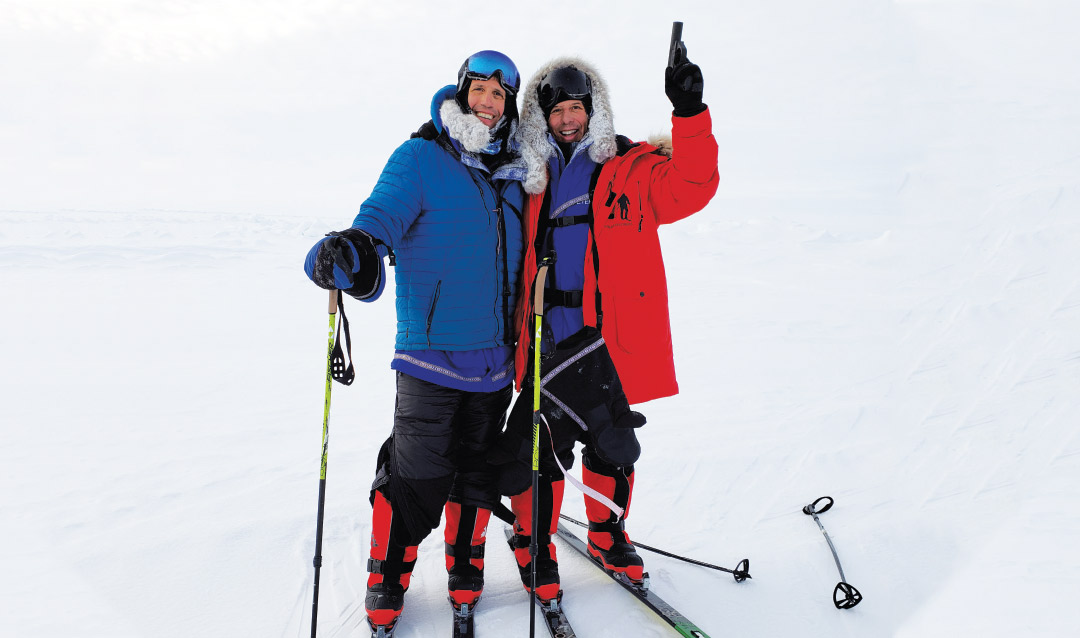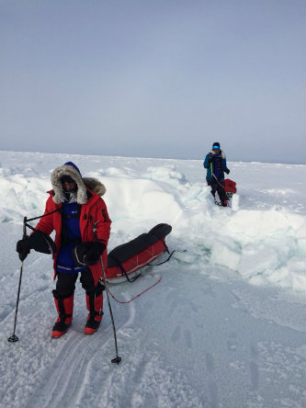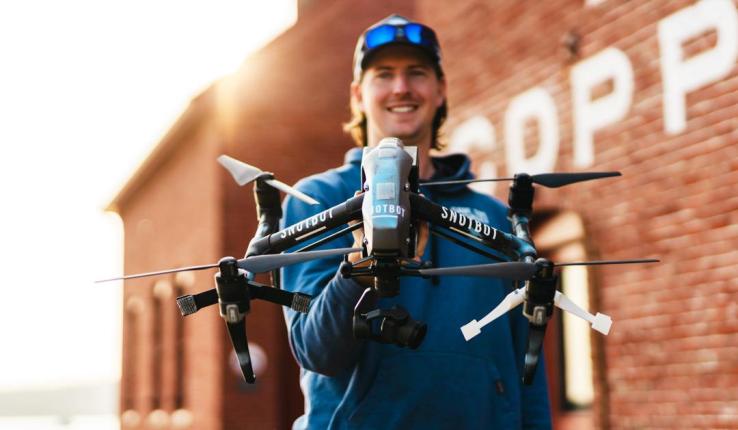Brothers Peter ’82 and Robert (Bob) ’84 Fioretti have explored a place that few others get to see, one of the most solitary locations on the planet. In April 2018, at the beginning of that year’s expedition season, they trekked to the North Pole, a feat that fewer than 500 adventurers have accomplished in recorded history. The Fiorettis were the first to arrive at Earth’s pinnacle in 2018, according to their guide.
“It’s been a dream of Pete’s for about six years,” said Bob. “He’s wanted to go to the North Pole and literally be on top of the world.”
So, for the 25th anniversary of their company, Mountain Real Estate Capital, the brothers decided to attempt the adventure in the most extreme way possible—no dogs, no snow machines, no resupplying plane support—just themselves, a guide, their skis, and sleds full of supplies that they pulled behind them.
To prepare for the journey, the Fiorettis trained for three months—Bob in California, and Peter in Florida—doing leg and core work and pulling truck tires to simulate the 60-pound sled of supplies they each would haul. Mental and breathing training was also part of the program, according to the method recommended by Wim “The Iceman” Hof, world record-holder for 26 athletic feats in extreme cold.
Their challenging journey began with a flight to Longyearbyen, Svalbard, Norway, the last outpost of civilization before the North Pole. There they participated in intense arctic training where they learned, among other things, how to manage their body heat using layers of clothing, camp in extreme cold, repel polar bears, and judge and navigate sea ice. From there, a decommissioned Russian military plane flew them three hours to Barneo Ice Camp, a temporary ice base created every year by Russian engineers and used mainly for tourist excursions. The ice camp is about one degree of latitude (or 69 miles) from the Pole.
‘Team Fioretti Mountaineers'
Peter, Bob, and their guide, Eric Lillstrom, were then helicoptered about 15 minutes from Barneo to their drop-point on the ice, where air temperatures were about -20 to -30 degrees even before factoring in wind chill. Their mission, which could potentially have taken up to six days, was to navigate the last half-degree of latitude (around 35 miles as the crow flies) by GPS to the North Pole.
“You think the challenge is going to be getting there in this freezing cold weather,” Bob said, “but you’re on top of an ocean with thousands of ice plates moving constantly. You don’t necessarily feel it, but they’re moving enough that, when you go to bed at night, you wake up and your location might have changed anywhere from one to five miles.”
The trek was anything but a straight line. While the South Pole lies on a continental land mass, the North Pole is located in the middle of the Arctic Ocean amid waters that are almost permanently covered with constantly shifting sea ice. As the ice shifts, waterways known as “leads” can open up and pressure ridges are created. The leads can be 100 yards or five miles, and the ridges may be climbable at only a foot or two high, or up to an impassable 10 feet.
“Every time you encounter a waterway, thin ice, or a pressure ridge, you have to make a choice about which direction to go—left or right. Eric was making hundreds of choices every day we were out there. We’re fortunate that they were mostly good choices,” Bob said.






